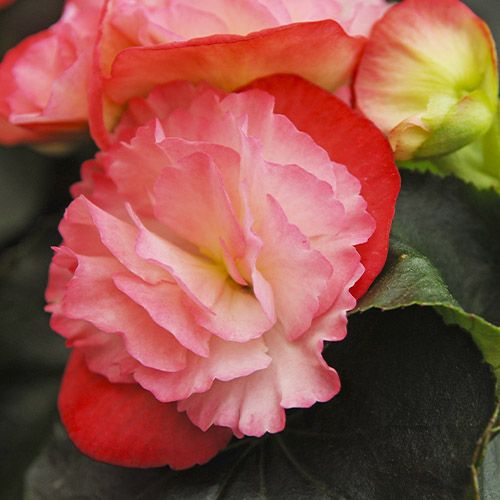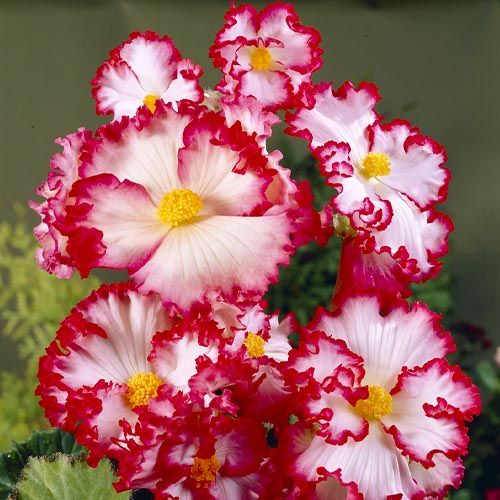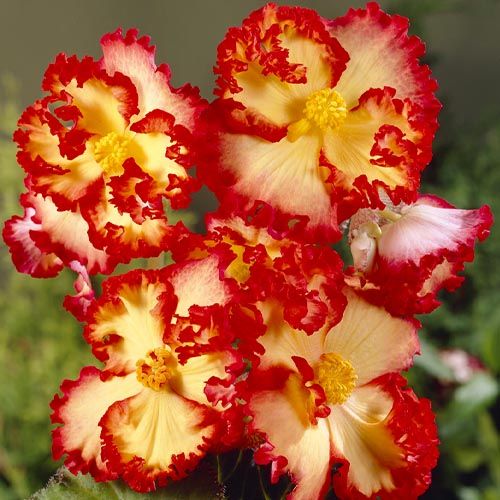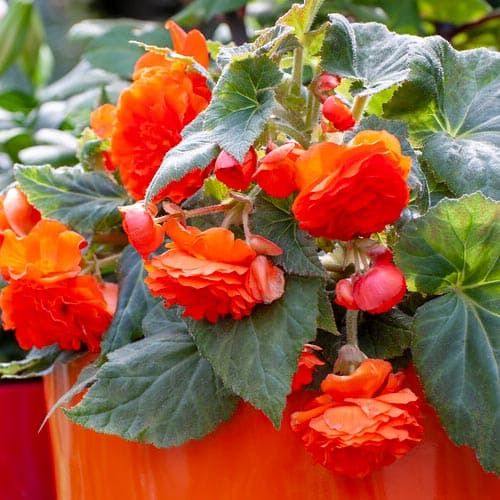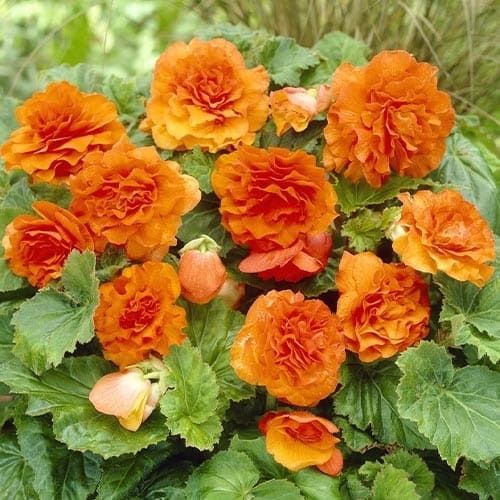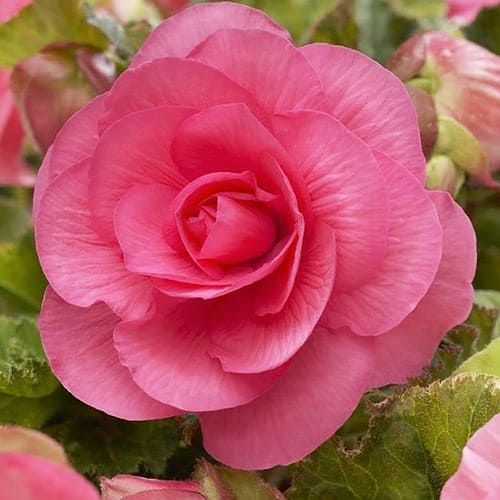Indoor Begonias
Indoor Begonias
Last Reviews
Introduction
Indoor begonias are lovely and adaptable plants that can offer color and intrigue to any space. They may be grown in pots, hanging baskets, or even as part of a terrarium and come in a range of sizes, shapes, and colors. This tutorial will teach you all you need to know about growing and caring for indoor begonias.
Types of Indoor Begonias
There are many different types of begonias that can be grown indoors, including:
- Rex begonias
These begonias have stunning foliage that comes in various patterns and colors. They are also known as painted-leaf or king begonias. They prefer bright, indirect light and high humidity.
- Angel wing begonias
These begonias have wing-shaped leaves that are often spotted or variegated. They also produce clusters of flowers in shades of pink, red, or white. They like bright, indirect light and moderate humidity.
- Cane begonias
These begonias have long, cane-like stems that bear large leaves and flowers. They are also known as bamboo or dragon wing begonias. They can tolerate some direct sun and low humidity.
- Tuberous begonias
These begonias have fleshy tubers that store water and nutrients. They produce large, showy flowers in a range of colors. They need bright, indirect light and high humidity.
Choosing the Right Pot
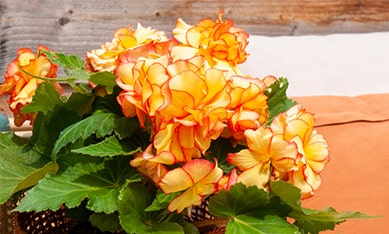
The right pot is essential for the health and growth of your indoor begonias. Youll want to choose a pot that is the right size and material for your specific type of begonia. Terra cotta pots are a popular choice, as they allow for good drainage and aeration.
The pot should be large enough to accommodate the root system of your plant, but not too large that it holds excess water. A general rule is to choose a pot that is one or two inches larger than the previous one. You should also repot your indoor begonias every year or two to prevent root rot and nutrient depletion.
Soil and Fertilizer
Begonias prefer a well-draining soil mix that is rich in organic matter. You can use a commercial potting mix, or make your own by combining equal parts of peat moss, perlite, and vermiculite. Begonias also benefit from regular fertilization, and a balanced, water-soluble fertilizer is recommended.
You should fertilize your indoor begonias every two weeks during the growing season (spring to fall), and reduce to once a month during the dormant season (winter). You should also avoid over-fertilizing your plants, as this can cause leaf burn and root damage.
Light and Temperature
Indoor begonias prefer bright, indirect light, but can also tolerate some shade. They should be kept at a consistent temperature between 60-75F (15-24C), and should be protected from drafts and extreme temperature changes.
You can place your indoor begonias near a window that receives morning or afternoon sun, but avoid direct midday sun that can scorch the leaves. You can also use artificial lights such as fluorescent or LED lamps to supplement the natural light.
Watering and Humidity
Begonias prefer to be kept consistently moist, but not waterlogged. They also benefit from a humid environment, which can be achieved by placing a tray of water near the plant, misting the leaves, or using a humidifier.
You should water your indoor begonias when the top inch of the soil feels dry to the touch. You should use room-temperature water and avoid wetting the leaves or flowers. You should also check the drainage holes of the pot to make sure there is no water accumulation. You should also adjust the watering frequency according to the season and the type of begonia.
Propagation
Indoor begonias can be propagated through stem or leaf cuttings, or by division. Stem cuttings should be taken from the plant in the spring or summer, and should be rooted in a well-draining soil mix. Leaf cuttings can be taken any time of year, and should be rooted in a mixture of perlite and peat moss.
To propagate by stem cuttings, you should cut a healthy stem that has at least one node (where the leaf joins the stem) and a few leaves. You should remove the lower leaves and dip the cut end in rooting hormone. You should then insert the cutting into a moist soil mix and keep it in a warm and bright place until roots form.
To propagate by leaf cuttings, you should cut a healthy leaf along with a part of the petiole (the stalk that attaches the leaf to the stem). You should then make small cuts on the veins of the leaf and place it on a moist perlite and peat moss mix. You should cover the cutting with a plastic bag or dome to create humidity and keep it in a warm and bright place until new plants emerge from the cuts.
To propagate by division, you should carefully remove the plant from its pot and gently separate the root ball into smaller sections. You should then repot each section into a new pot with fresh soil mix and water well.
Common Problems
Like any plant, indoor begonias can be susceptible to pests and diseases. The most common problems include mealybugs, spider mites, and powdery mildew. These issues can be addressed with a variety of organic or chemical treatments.
Mealybugs are small, white insects that feed on the sap of the plant and leave behind a sticky substance called honeydew. They can cause stunted growth, yellowing leaves, and distorted flowers. You can control mealybugs by wiping them off with a cotton swab dipped in alcohol, spraying them with insecticidal soap or neem oil, or using systemic insecticides.
Spider mites are tiny, red or brown spiders that spin webs on the underside of the leaves. They also feed on the sap of the plant and cause yellow spots, dry leaves, and reduced vigor. You can control spider mites by increasing the humidity around the plant, spraying them with water or miticides, or introducing predatory mites.
Powdery mildew is a fungal disease that appears as white or gray patches on the leaves and stems. It can reduce photosynthesis, weaken the plant, and make it susceptible to other infections. You can prevent powdery mildew by providing good air circulation, avoiding overhead watering, and removing infected parts. You can also treat powdery mildew with fungicides or baking soda solutions.
Conclusion
Indoor begonias are a beautiful and rewarding addition to any home. With the right care and attention, they can thrive and provide color and interest all year round. If you are looking for indoor begonias plants for sale, you can browse our online store and find a wide range of options to suit your preferences and budget. We also offer free shipping on orders over $50 and a 30-day guarantee on all our plants. Order your indoor begonias today and enjoy these stunning plants in your home!












